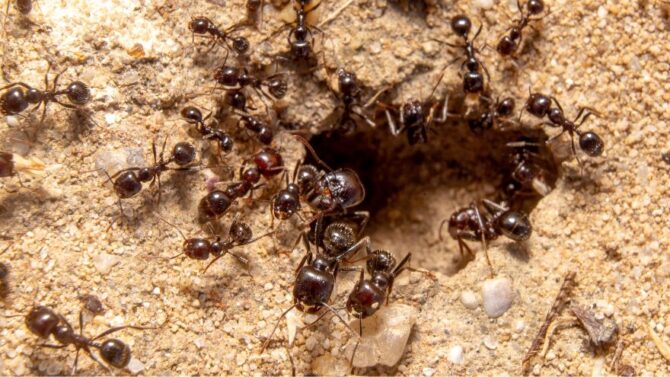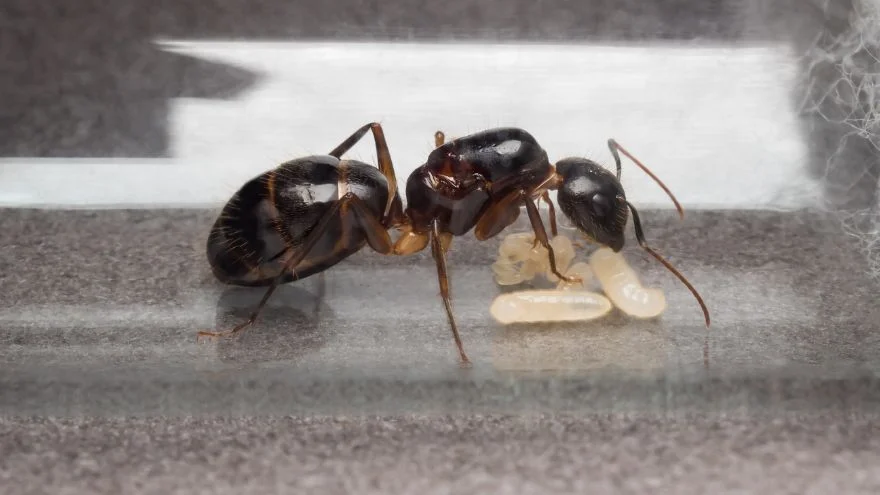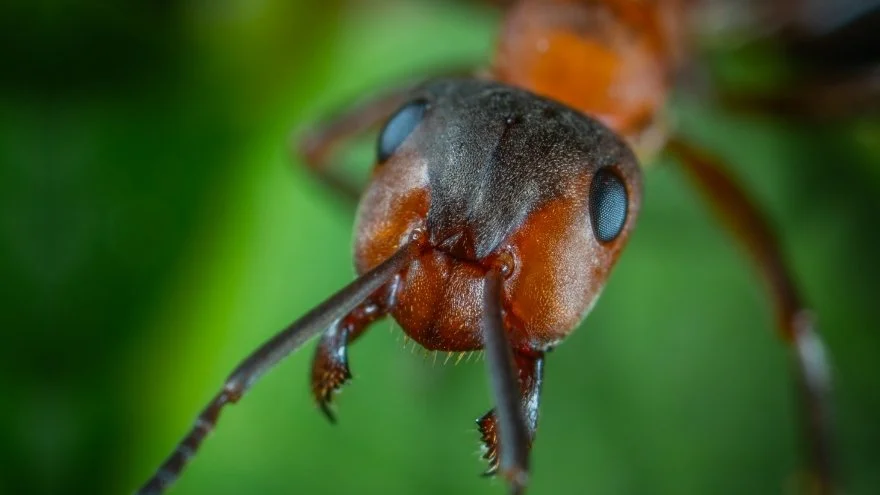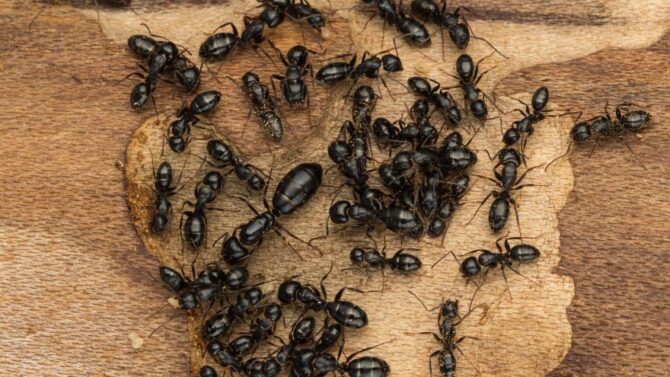There is barely a place on the surface of the planet earth where you won’t find ants. With 12 subfamilies and over 12,000 species identified, no animal comes close in terms of population.
Ants are unlike any other organism; they operate together like a system, each part working to achieve system goals. How do ants reproduce to get this high population?
Ants reproduce through sexual reproduction and parthenogenesis. Parthenogenesis refers to the process whereby only one parent is required to produce offspring.
The queen can store sperm for subsequent fertilization. She can also produce offspring from unfertilized eggs without mating.
Despite the ability of ants to produce offspring without mating, ants still mate for many reasons. We’ll go into details in the paragraphs that follow.
How Do Ants Reproduce?
Ants reproduce by laying and hatching eggs. These eggs will pass through different stages before finally reaching the stage of adulthood.
This reproduction starts with the mating of winged males and virgin ant queens, after which the female never mates again. She collects and stores enough sperm to last a lifetime in just one mating.
After successful mating, both the male and female ants lose their wings. The male dies, and the female digs her hole in preparation to start her colony.
The queen ant produces small cream-colored eggs that worker ants tend till maturity. She can also determine the gender and the function of her offspring to the colony’s needs. Her first offspring are all workers.
Life Cycle of Ants
Ants undergo what is known as complete metamorphosis. This means they hatch from eggs into larvae to pupae before they develop into adults.
After the queen ant has been mated, she lays cream-colored eggs that hatch into larvae.
The larvae hatch out without any limb and grow into pupae. The pupae have the same appearance as an adult but a lighter color.
The adult is darker and can either be a worker, a winged male, or a queen. Most times, the ants we see around us are the worker ants gathering food for the colony.
How Do Ants Mate?
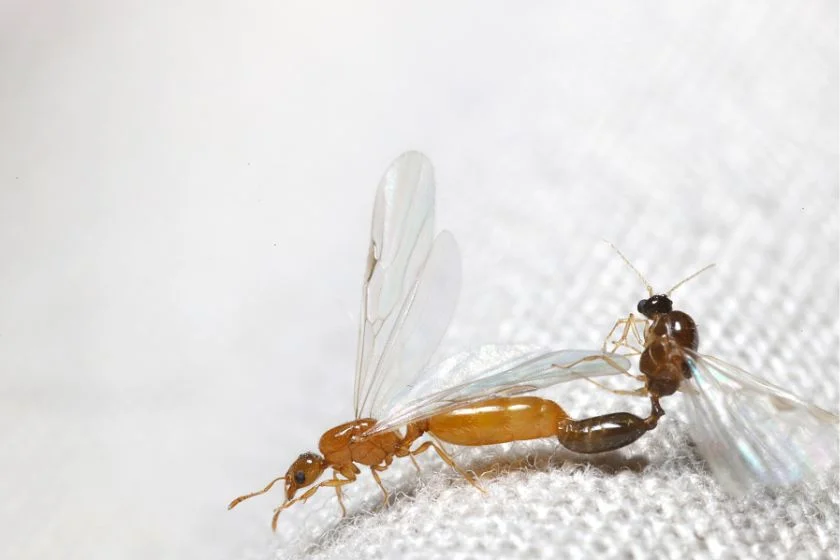
As stated earlier, queen ants only mate once in a lifetime, and they do this once there is a need to start a new colony.
The winged males take flight alongside the young queen in a large group, searching for mates from another colony. Doing this eliminates the possibility of inbreeding among the ant families.
Unfortunately, only a few ants get the opportunity to find mates. Ant predators like birds, frogs, and other insectivorous animals feed on the rest.
After mating, the queen and her mate lose their wings, and the queen sets out to start her colony. She makes her nest deep in the ground, lays her eggs, and nurtures them till maturity.
How Are Ants Born?
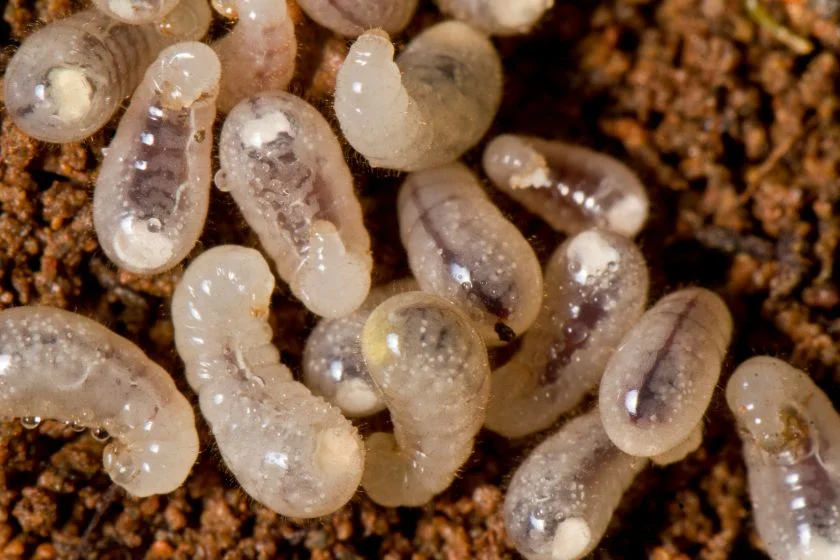
Ants are born by the hatching of ant eggs into larvae. An interesting fact about ants is that the queen can decide the gender and the function of her offspring, and she decides the gender based on the colony’s needs.
The queen produces fertilized eggs that grow into either workers or queens after mating.
If the queen decides not to mate, she can still produce unfertilized eggs that will grow into wings. The winged males will later be responsible for mating another queen.
An established ant queen can lay up to 800 eggs per day after mating. However, a young queen that has just mated will lay only a dozen eggs that hatch after about 7 days.
The queen takes care of the newly hatched larvae until they mature into workers, during which she does not eat anything. As the colony grows, the queen starts to lay more eggs.
How Fast Do Ants Reproduce?
After the queen lays the first set of eggs, the adults emerge after 40 to 60 days. These first adults comprise only workers who will be responsible for the grooming and feeding of the queen.
They also build and expand tunnels, as well as move fertilized eggs to hatching chambers.
The workers protect the eggs until they mature into adult workers like them. Then the cycle continues again for some time (The ergonomic stage).
This stage of colony building is very tasking, and it takes about 5 years before the colony is ready to start a new colony.
How Do Ants Set Up New Colonies?
Each ant colony structure has its queen, workers, and other castes with clear responsibilities. The fewest of the castes are winged males.
The only thing the winged males do is reproduce with the queen. Afterward, they die. When a colony becomes loaded with winged males, it is time for a new colony to be formed.
Dive Deeper: Here are the Reasons Why there is no King Ant.
The queen lays eggs, some of which hatch and grow into adult queens. When they mature, they fly out of the nest in groups alongside the winged males.
Although many of these queens and the winged males don’t survive due to predators, few of them still get to mate. After mating, the queen finds a suitable place to build her nest and starts her colony.
Why Do Ants Move Their Eggs?
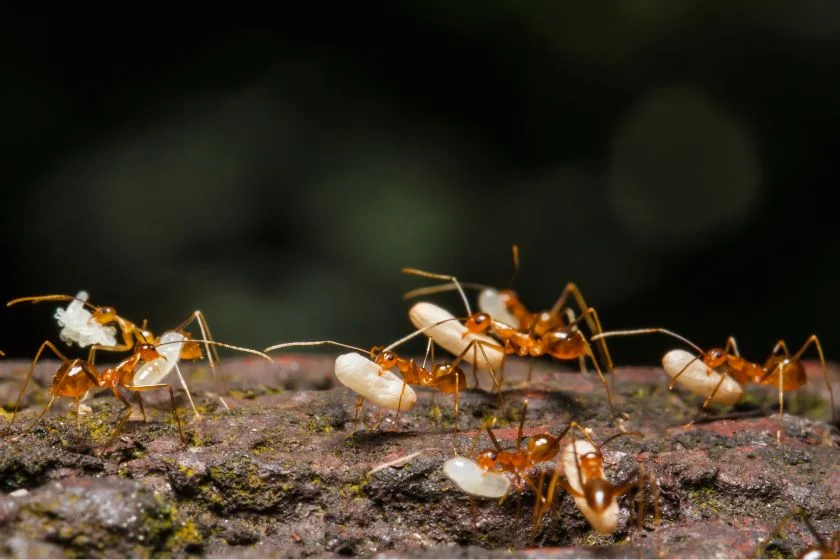
Ants move their eggs for one of these two reasons. First, if the colony is under attack or part of the ant tunnel gets destroyed, the workers will carry the eggs to safety to preserve the next generation of ants.
The second reason why ants move their eggs is more of a routine. The workers take the eggs up to the surface when the sun is out so that the egg can receive warmth.
And when the sun goes down, they bring the eggs into the deep part of the nest where the combined heat of the colony can warm the eggs.
Can a Colony Have More Than One Queen?
Yes, it is possible. In some ant species, there is more than one queen in a single colony.
The queens work together in the colony, and when it’s time for new colonies to be formed, some worker ants will move out of the colony alongside fertile queens and help them establish their colonies outside the main colony.
There are even terms to differentiate a colony with one queen and one with multiple queens. A colony with one queen is known as monogyne while one with more than one queen is known as polygyne.
What are the Different Ant Castes?
There are different castes of ants; each is unique and has different responsibilities toward the colony. The castes of an ant colony include the queen, worker, winged male, and soldier.
The Queen
The queen is the oldest ant in the colony. All the ants in the colony were hatched from her eggs.
Her job is to lay fertilized eggs and produce ants according to the colony’s needs. She doesn’t move around much and is always the colony’s biggest.
Dive Deeper: How Are Queen Ants Born and How Do They Become Queen?
Workers
The workers have the highest number in any ant colony. They are all female ants and have the most important responsibilities in the colony.
Their responsibilities range from young workers caring for the queen to adults sourcing food for the colony.
Drone or Winged Males
Drones or winged males are ants that hatched from unfertilized eggs. The drones have only one responsibility: mating with princesses during nuptial flights.
After completing this task, they die. Drone ants are mostly mistaken for wasps because of their wings.
Soldiers
Soldier ants are sterile female ants that are much larger than average worker ants, and their size is put to work by helping worker ants carry food particles that are too large.
They are not common to all colonies; they are only found in polymorphic species. You can easily identify Soldier ants because of their large mandibles.
Conclusion
The level of organization displayed by ants is second to none. Each ant amongst millions of ants has a specific duty to perform to ensure the continuity and survival of the colony.
Ants are dedicated, unrelenting, and can survive in any environment. Their reproduction process and life cycle have helped them conquer every terrain and placed them high among abundant species.

